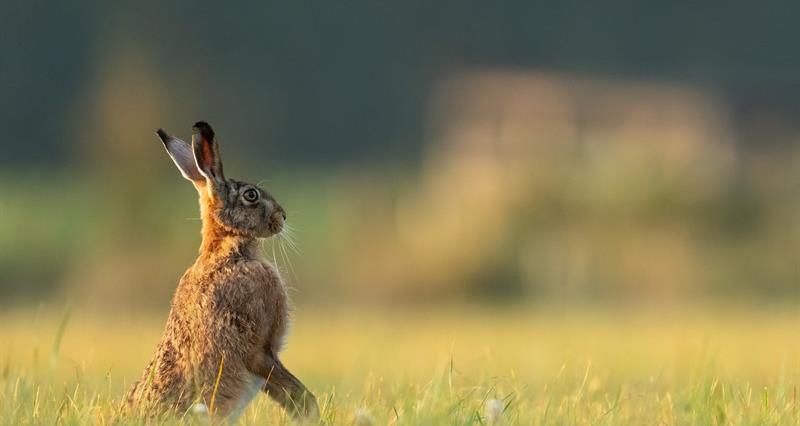NFU members in many parts of the country have been the victims of hare coursing, often associated with violence, intimidation, coercion, criminal damage, dangerous driving and acquisitive theft.
╗╩╝ę╗¬╚╦made sure the concerns of members were fed into the consultation so that the courts are enabled to exercise the full scope of their powers.
╗╩╝ę╗¬╚╦also attended the Operation Galileo Conference at Leicester Police HQ where two members gave evidence on the perspective of victims of hare coursing.
Culpability
When deciding on sentencing, consideration is given to the culpability of the offender and the harm caused by the offence.
The Sentencing Council has proposed that the offender has higher culpability if they are part of a large group, the activity involved significant planning, included intimidation or the threat of force and involves children.
NFU members disagreed that the size of the group is a relevant factor. A person setting out to course hares is committing an offence irrespective of the size of the group, and the size of the group doesnŌĆÖt necessarily relate to the number of hares chased and killed, or the area of crops damaged.
Coursers will also often drive across fields, and the weight of vehicles can compact the soil which can limit crop growth. This can take months or years to rectify.
Hare coursing often involves criminal damage, violence and intimidation, and can include dangerous driving, involving driving untaxed and uninsured vehicles.
The timetable of coursing activity involves a start after harvest in July and August but can continue into February when many fields have had seed drilling carried out. Driving over fields will destroy young crops.
╗╩╝ę╗¬╚╦has also identified a trend associated with the new offences created in the Police, Crime, Sentencing and Courts Act 2022. The new powers within the Act for police and courts to tackle illegal hare coursing has meant offenders have more reason to avoid being apprehended, often leading to vehicles failing to stop and dangerous driving through narrow country roads to avoid a police pursuit.
The dogs are often the coursersŌĆÖ key assets, sometimes worth tens of thousands of pounds, and offenders are often willing to take considerable risks to avoid dogs being seized.
There is also increasing evidence of hare coursing being linked to highly organised, often international, criminal networks. Hare coursing is often reported as the ŌĆśleisureŌĆÖ activity of organised criminals. The report, revealed that 22 organised crime gangs are actively involved in rural crime across the UK.
Culpability should be judged on intent and damage caused, not on the numbers of people involved.
Harm
The Council has proposed that the principal harm caused by hare coursing is to the rural communities who find themselves the victims of physical and verbal abuse, as well as damage to their property, and that the harm to hares themselves, while important to note, is a secondary factor and may be difficult to evidence.
╗╩╝ę╗¬╚╦welcomes the inclusion of fear as a harm factor, as this can have considerable impact on farming families and rural communities, leading to feelings of vulnerability and impacting the mental health of the victims.
╗╩╝ę╗¬╚╦considers that any damage to property, land or livestock can have considerable impact on the farm business operations, and farms are often family homes as well. A feature of coursing incidents is that vehicles are often abandoned and sometimes set on fire to conceal evidence. The landowner is then left with the problem and cost of removal. This aspect of the offence should be included as Category 1 Harm.
NFU members also report that they have an affinity with the hares they see on their land, and many have incorporated conservation measures within their farm business to encourage hares onto their land. They therefore report that the principal harm is the hunting of the hares, and the proposed Category 1 Harms proposed are a direct result of the hunting of the hares. NFU members commented ŌĆ£it is cruel and barbaric and illegal, and all the other harms follow on as a result of itŌĆØ, and ŌĆ£I see no difference of importance between harm to me if I confront poachers or to my dogs with me or to the wildlife being huntedŌĆØ.
Sentencing Levels
The assessment made of harm and culpability results in the selection of the level of sentencing.
For example, for a high culpability and a high level of harm offence, the courts can use the full powers provided by the Police, Crime, Sentencing and Courts Act 2022.
The Act increased the maximum penalty available for the offences used to prosecute hare coursing under the Night Poaching Act 1828 the Game Act 1831 from a fine to six monthsŌĆÖ imprisonment.
NFU members are sceptical on the deterrent effect of the proposed custody periods; some consider six monthsŌĆÖ custody as not enough of a deterrent and that short term imprisonment wonŌĆÖt make a significant difference to levels of hare coursing.
╗╩╝ę╗¬╚╦supports a severe fine coupled with effective use of the ancillary orders as they are essential deterrents to coursing activity, particularly:
- Recovery orders allow police to seize dogs and recover kennelling costs from offenders.
- The disqualification order banning offenders from owning and/or keeping dogs.
- Deprivation orders, allowing the seizure of dogs and vehicles used in the offence, and a driving disqualification order.
NFU member comments on the ancillary orders include: ŌĆ£If imposed upon enough culprits, and enforced, these are great actions.ŌĆØ
Criminal Behaviour Orders
NFU members report that often they feel targeted after a coursing conviction and feel vulnerable that an offender may revisit their farm to intimidate and harass. ╗╩╝ę╗¬╚╦would like the Sentencing Council to consider whether Criminal Behaviour Orders should be included in the list of powers that can be handed down by the courts, as an NFU Member reports, ŌĆ£A farmer should be able to feel safe on their own farm after such an incident but doesnŌĆÖtŌĆØ.
NFU members can log in and read the NFUŌĆÖs response in full:╠²NFU consultation response | Hare Coursing Sentencing Guidelines.
